




This year (2010) we sowed two varieties of sweet corn - Sweet Nugget and Tasty Gold.
Sweet Nugget was described as doing well in cooler conditions and with our summers this seemed a good option. Both were said to have sweet flavour.
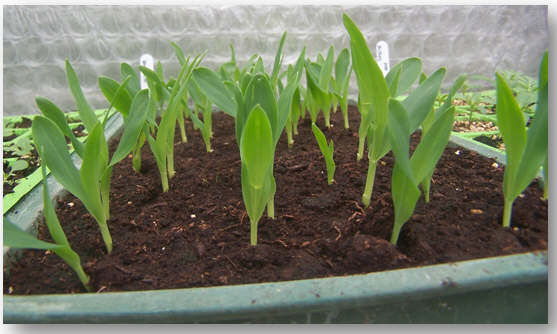
The seeds were sown in trays in a cold greenhouse on 25 April .
On 16 May the young plants were potted on into pots and module cells.
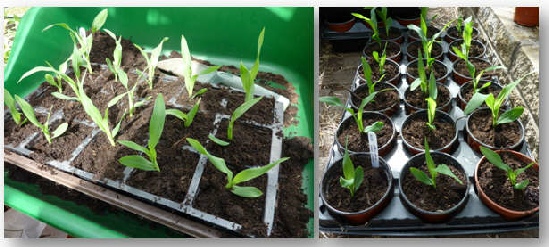
On 21 May the young plants were transferred to a cold frame to harden off. They would stay here until there would be no danger of frost

The plants were planted in the on 3 June – in our region (West Yorkshire) the beginning of June tends to mark the end of any severe frosts. Before planting the ground was rotavated and blood, fish and bone fertilizer was applied.
Sweet corn is wind pollinated and so for successful pollination to be achieved the plants need to be planted in blocks. If space means that this isn’t possible then the plants should at least be placed in a double row. The plants can be successfully grown fairing close together. The recommended distance between plants is 45 cm but I have to admit ours are maybe more like 30 cm apart.
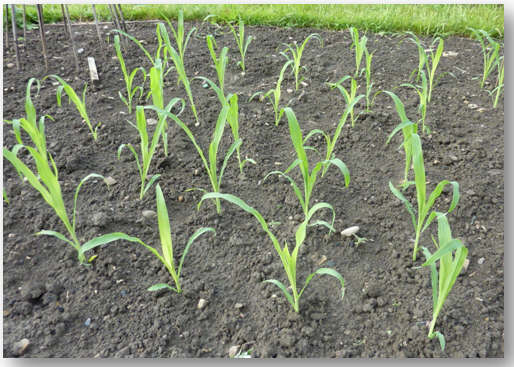
After planting all that was necessary was to provide a drink of water when conditions were dry and a bit of hoeing to keep down the weeds.
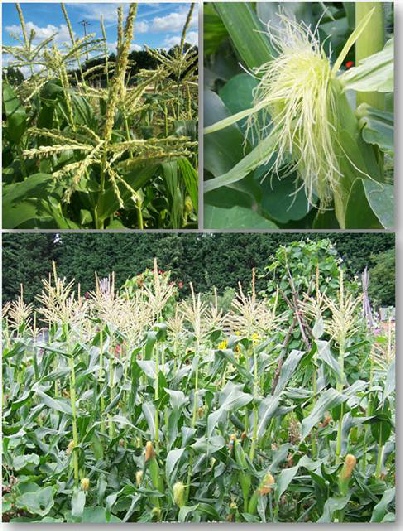
To avoid cross pollination the plants were set out in different parts of the plots and away from where other people had planted theirs.
Sweet corn produces two types of flower. Male flowers are produced at the top of the plant and female flowers lower down the stems. As the plant sways in the wind pollen from the male flower is transferred to the female flower and the cobs (which are really the fruits of the plant) are formed. If the weather is very still when the plant is in flower you can simulate the effect by shaking the plants gently.
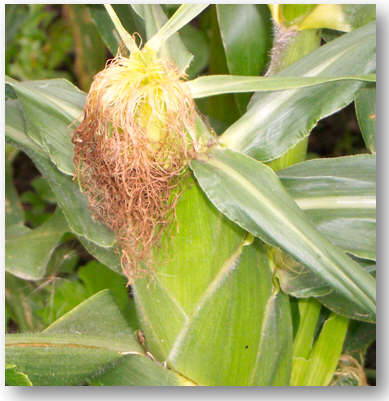
One or two cobs will form on each plant. The cobs are ready to harvest when the tassels of the female flowers turn brown. You can check that the seeds are fully ripe by peeling back the sheaf of leaves and piercing a seed with your fingernail – the juice that escapes should be a milky colour if the corn is ripe. We picked our first cob on 14 August.

We made a second sowing of seed about a month after the first to try and extend the season as generally there are too many corns produced to eat fresh.
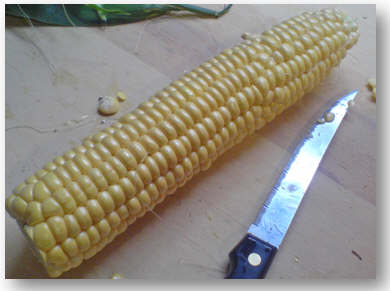
When we have too many to eat straight from the plant we freeze the rest. Before freezing the seeds are stripped from the cobs. Advice is to blanch before freezing but I have to admit that we don’t.
Three sisters
The Iroquois use a system of growing called the three sisters, the three sisters being, corn, squash and climbing beans. They first placed several corn seeds in a hole. As the seeds grew they earthed they mounded soil around them – a little like earthing up potatoes. This formed a mound of earth about 30 cm. high around the corn plant.
The between the plants squash or pumpkins were planted to cover the soil. This kept down weeds and acted as a mulch to prevent water evaporation and in turn the other two plants provided shade for the squash or pumpkin.
We haven’t tried this system properly but we do often grow runner beans, sweet corn and squash in the same bed. The squash is allowed to ramble between the sweet corn plants but the beans are grown up canes – our sweet corns would soon be swamped by the runner beans if they were used as supports.
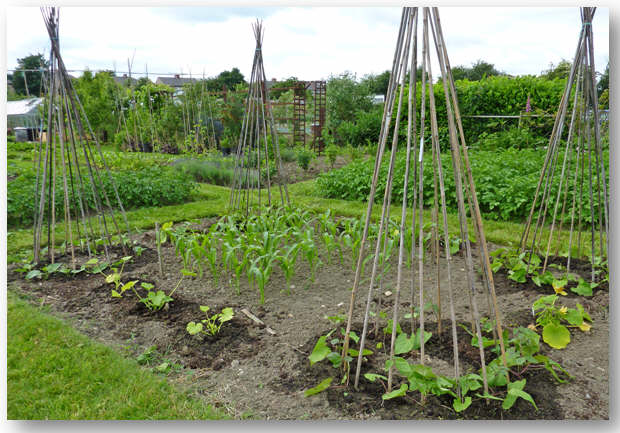
One of this year's (2010) beds soon after planting in June.























